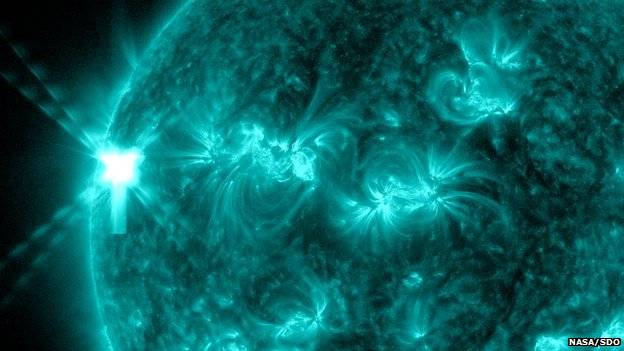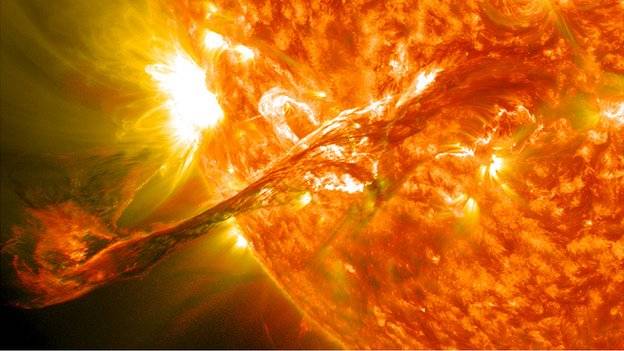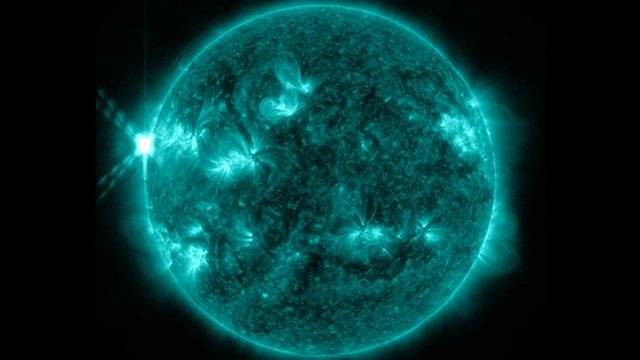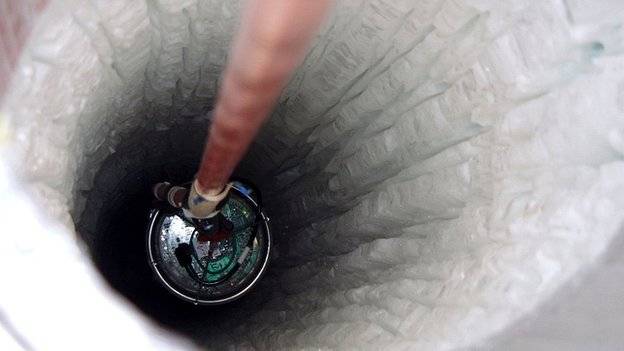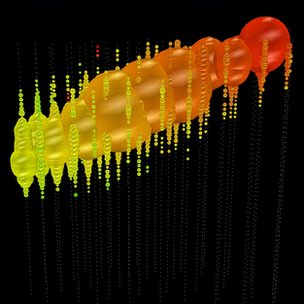ScienceRocks
Democrat all the way!
- Banned
- #1
Sunspot group 1158 produces an X class solar flare
Posted on February 14, 2011 by Anthony Watts
It’s the first one in 38 months, Solar expert Dr. Leif Svalgaard says the last X class flare was Dec 13th, 2006. The flare today is the first Solar Cycle 24 flare reaching X class level.
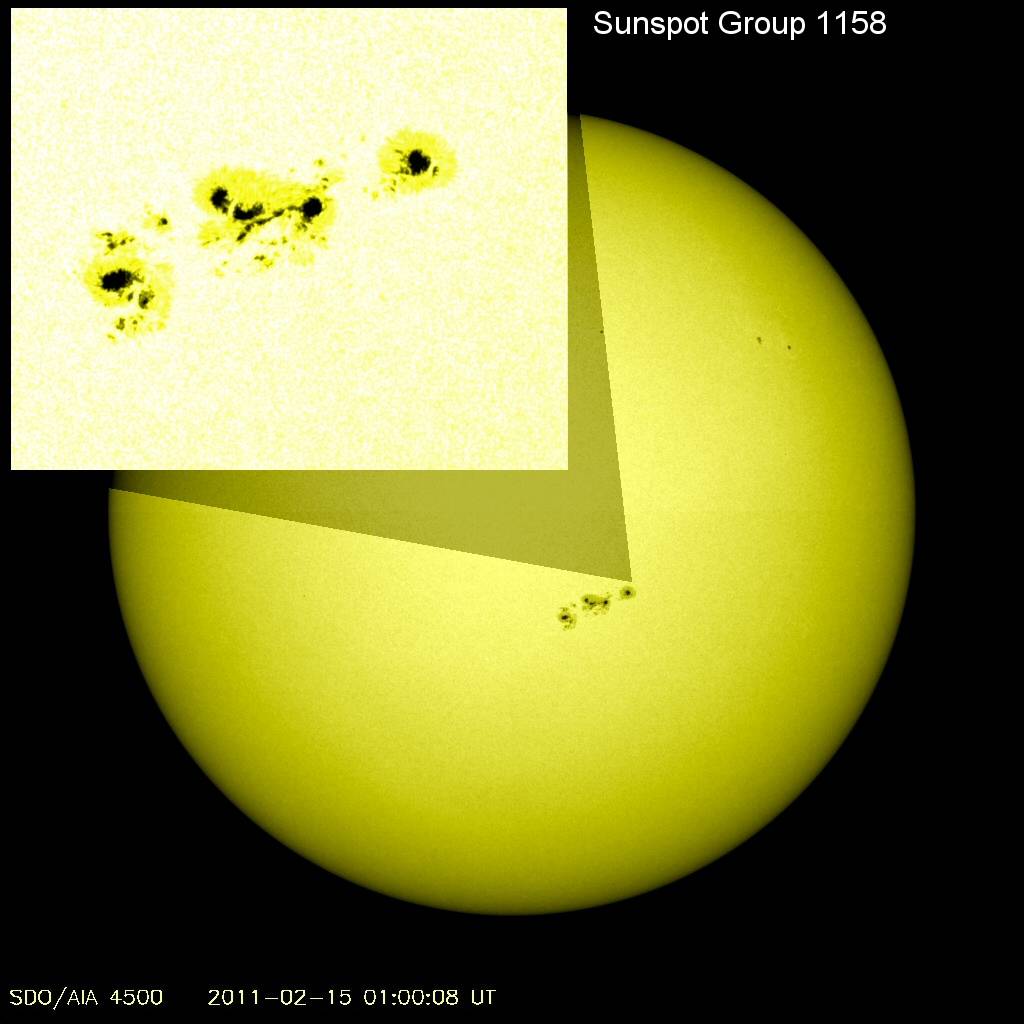
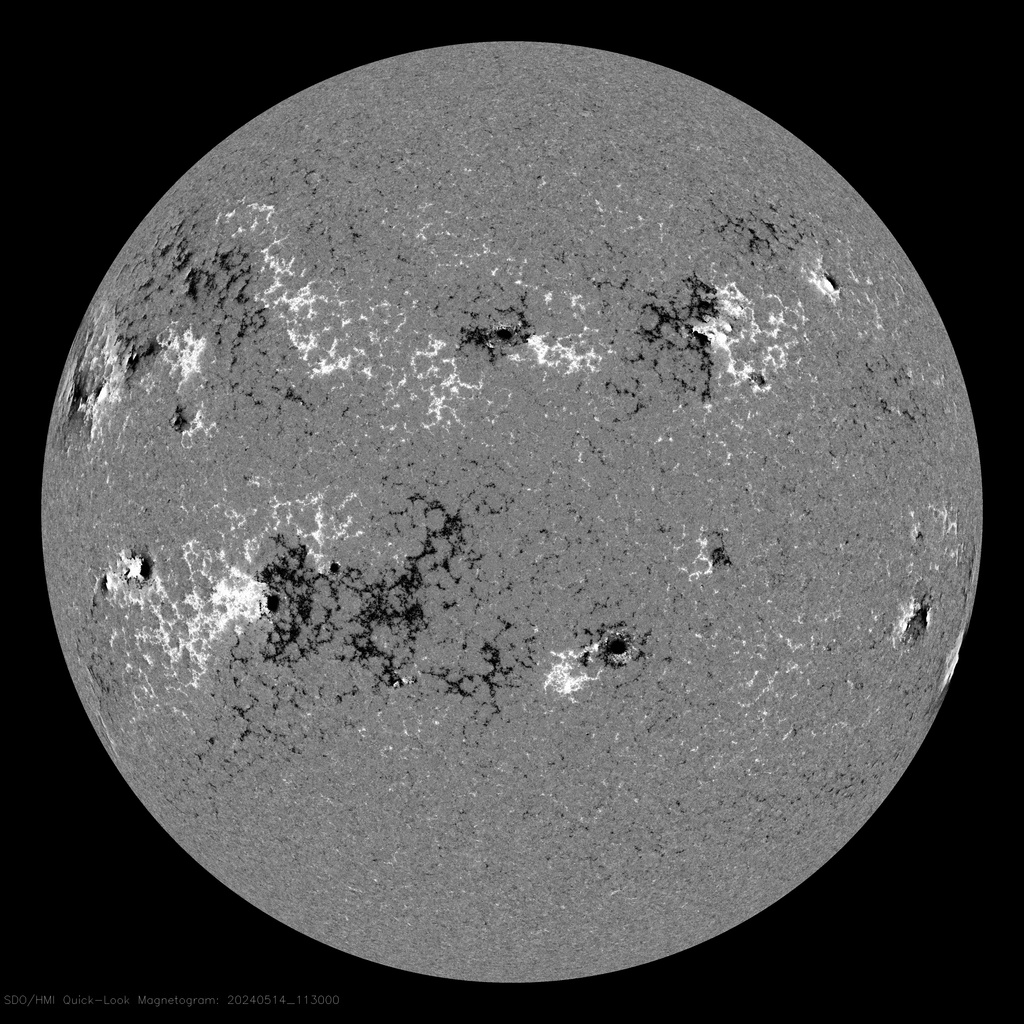
BOOOM!!!!
SOLARCYCLE 24.com / Solar Cycle 24 / Spaceweather / Amateur Radio VHF Aurora Website
Major Flare (X2.2) / Full Halo CME
02/15/2011 by Kevin VE3EN at 02:20
Comment on Message Board
UPDATE - It appears a full halo CME was associated with the X2.2 Flare. I created this Movie with the STEREO website using the COR2 Behind data.
X2.2 Major Solar Flare - The sun showed some love on Valentines Day. Massive Sunspot 1158 has produced a major X2.2 Class Solar Flare at 01:56 UTC Tuesday. This is the largest Solar Flare of Cycle 24 and a CME could be associated with this event. A strong R3 Radio Blackout has taken place as well. More to follow.
Solar Flux 113 - The solar flux is again at a new high of 113. This beats out Sunday's reading of 107 and this is the highest it has been since September of 2005.
2011 02 05 81 26 25 0 -999 A4.4 0 0 0 5 0 0 0
2011 02 06 80 41 30 0 -999 A4.4 0 0 0 0 0 0 0
2011 02 07 82 28 30 0 -999 A5.6 0 0 0 0 0 0 0
2011 02 08 90 71 120 4 -999 B1.0 2 0 0 3 0 0 0
2011 02 09 89 67 230 0 -999 B1.4 1 1 0 1 0 0 0
2011 02 10 91 38 40 0 -999 B2.3 4 0 0 0 0 0 0
2011 02 11 91 54 100 2 -999 B1.6 0 0 0 0 0 0 0
2011 02 12 96 63 90 1 -999 B1.2 1 0 0 0 0 0 0
2011 02 13 107 84 180 0 -999 B4.4 4 1 0 3 1 0 0
2011 02 14 113 90 530 1 -999 * 11 1 0 6 1 0 0
About fucking time....WAHOOOOOO!!!! Come on sun get us to 200!!!!
Come on sun get us to 200!!!!
Posted on February 14, 2011 by Anthony Watts
It’s the first one in 38 months, Solar expert Dr. Leif Svalgaard says the last X class flare was Dec 13th, 2006. The flare today is the first Solar Cycle 24 flare reaching X class level.


BOOOM!!!!
SOLARCYCLE 24.com / Solar Cycle 24 / Spaceweather / Amateur Radio VHF Aurora Website
Major Flare (X2.2) / Full Halo CME
02/15/2011 by Kevin VE3EN at 02:20
Comment on Message Board
UPDATE - It appears a full halo CME was associated with the X2.2 Flare. I created this Movie with the STEREO website using the COR2 Behind data.
X2.2 Major Solar Flare - The sun showed some love on Valentines Day. Massive Sunspot 1158 has produced a major X2.2 Class Solar Flare at 01:56 UTC Tuesday. This is the largest Solar Flare of Cycle 24 and a CME could be associated with this event. A strong R3 Radio Blackout has taken place as well. More to follow.
Solar Flux 113 - The solar flux is again at a new high of 113. This beats out Sunday's reading of 107 and this is the highest it has been since September of 2005.
2011 02 05 81 26 25 0 -999 A4.4 0 0 0 5 0 0 0
2011 02 06 80 41 30 0 -999 A4.4 0 0 0 0 0 0 0
2011 02 07 82 28 30 0 -999 A5.6 0 0 0 0 0 0 0
2011 02 08 90 71 120 4 -999 B1.0 2 0 0 3 0 0 0
2011 02 09 89 67 230 0 -999 B1.4 1 1 0 1 0 0 0
2011 02 10 91 38 40 0 -999 B2.3 4 0 0 0 0 0 0
2011 02 11 91 54 100 2 -999 B1.6 0 0 0 0 0 0 0
2011 02 12 96 63 90 1 -999 B1.2 1 0 0 0 0 0 0
2011 02 13 107 84 180 0 -999 B4.4 4 1 0 3 1 0 0
2011 02 14 113 90 530 1 -999 * 11 1 0 6 1 0 0
About fucking time....WAHOOOOOO!!!!
 Come on sun get us to 200!!!!
Come on sun get us to 200!!!!
Last edited:



